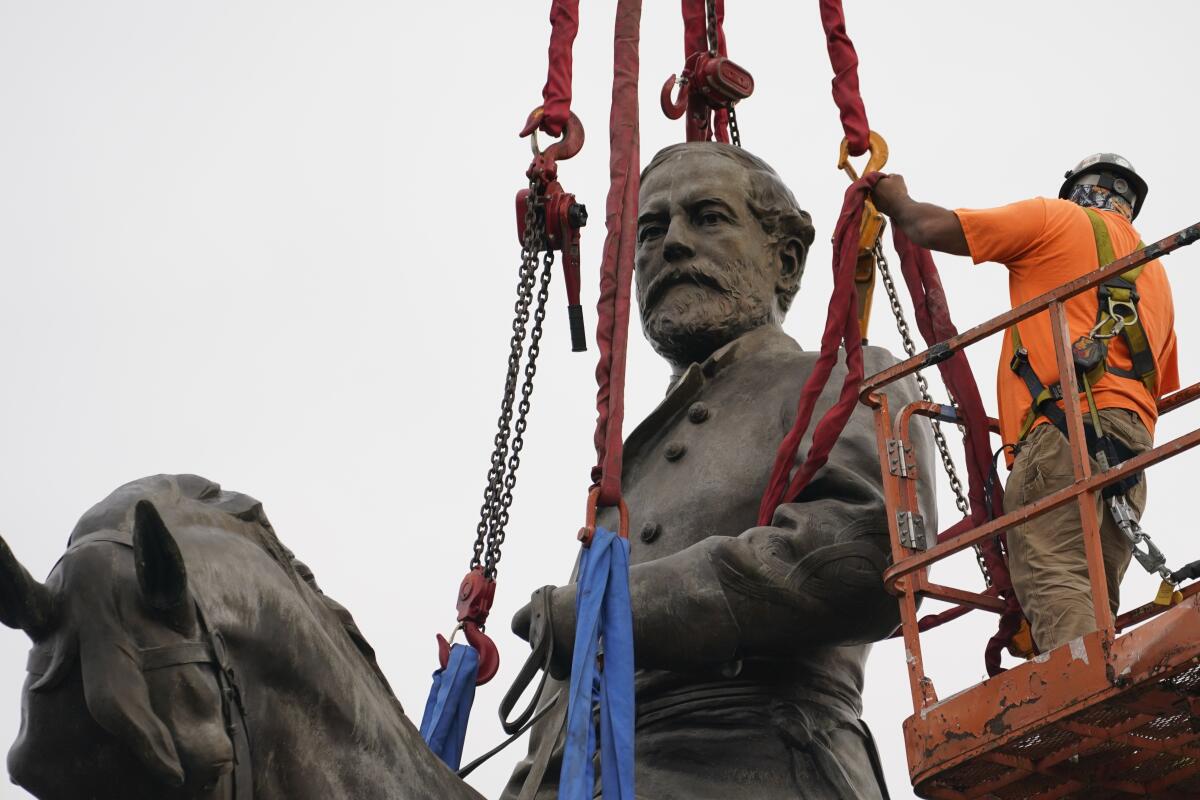Why March 2 is the true birthday of modern America

- Share via
March 2 is rarely celebrated as the birthday of our America — but it should be.
This was the day in 1867 when Congress overrode President Andrew Johnson’s veto of the first Reconstruction Act, which created a new republic by wiping out the governments of the Confederate states and putting them under military control.
The 1776 revolution created a new nation, certainly. But the America of 1776 or 1787 was what historians have called a slaveholders’ republic, with a Constitution that protected slavery and excluded Black people from national citizenship. Black Americans, women, and other groups had no protection from state discrimination, and even white men had almost no federal constitutional rights protecting them against their state governments.
The 13th Amendment, which banned slavery, the 14th Amendment, which granted citizenship to formerly enslaved people and guaranteed equal protection of the laws to all, and the 15th Amendment, which prohibited racial discrimination in voting, formed what I call the Reconstruction Constitution — one very different from the Constitution of 1787.
The 14th Amendment was drafted in 1866, during the post-Civil War era of Reconstruction. Slavery was over, at least in name, but Americans had not agreed on the new order going forward. Former Confederate states tried to reimpose white supremacy with laws called the Black Codes, which denied many rights to the formerly enslaved.
Congress rejected those discriminatory laws by passing civil rights acts that granted citizenship and other rights to Black Americans. But Congress worried that the courts might invalidate these acts, or that subsequent congresses, containing representatives of the South, might repeal them.
The 14th Amendment was designed to place these issues beyond the reach of pro-slavery judges or ordinary politics. It would set the terms of a new American social contract, one based on inclusion and equality.
The Reconstruction Congress sent this proposed amendment out to the states for ratification, as Article V of the Constitution required. It asked America to commit itself to this new order — perhaps most fundamentally, to accept Black Americans as citizens.
America said no.
Tennessee ratified the 14th Amendment in 1866, but apart from that, every former Confederate state refused. And not just the former Confederates. Delaware and Maryland rejected the amendment in early 1867; so did Kentucky. New Jersey and Ohio would try to withdraw their ratifications in 1868.
By the end of 1866 it was clear that the 14th Amendment could not get ratification from three-fourths of the states as Article V required. The attempt to change America through the existing legal framework had failed.
And so it had to go on by other means.
In February 1867, Congress passed the first of what would be four Reconstruction Acts. That first act declared that no legitimate governments existed in 10 former Confederate states. (Tennessee, which had ratified the 14th Amendment, was spared.) It abolished those state governments and placed them under military control. On March 2, Congress overrode Johnson’s veto of the bill to make it law.
Then, Congress instructed the people of the South to hold constitutional conventions and make new states. Congress decided who would be a citizen — including the formerly enslaved. Congress also decided who would hold political power — the formerly enslaved were entitled to participate in the conventions and former Confederates were not. The four Reconstruction Acts were a revolution. They destroyed the old Confederate states that had rejected the 14th Amendment and made new ones that would accept it.
This might sound like a bold claim. But Florida, Georgia and Alabama, which sued the secretary of War, alleged exactly this: the Reconstruction Acts were an extinction of the existing state and the creation of a new one, not by consent but by force. Similarly, the 1868 platform of the Democratic Party decried the Reconstruction Acts as unconstitutional and revolutionary.
The Supreme Court refused to hear the states’ suit, and history has long rejected the views of the 1868 Democrats. Since then, we have suppressed the radicalism of what happened during Reconstruction because we want to tell a story of continuity in which the America of 1787 gradually develops into a more just union. But that is not what happened, and it will be a sign of our maturity as a nation when we can face the truth of our origins.
In 1776, revolutionaries destroyed their old Colonial governments. New constitutions called new states into being. In 1787, those new states ratified a new federal Constitution and made a new nation. In 1867, revolutionaries again destroyed existing governments, and again new constitutions brought new states to life. Those new states ratified a new constitution, remaking America. The Reconstruction Act of March 2 started that process, and we owe more to it than to the Declaration of 1776.
Kermit Roosevelt III is a law professor at the University of Pennsylvania Carey Law School and the author of “The Nation that Never Was: Reconstructing America’s Story.”
More to Read
A cure for the common opinion
Get thought-provoking perspectives with our weekly newsletter.
You may occasionally receive promotional content from the Los Angeles Times.






